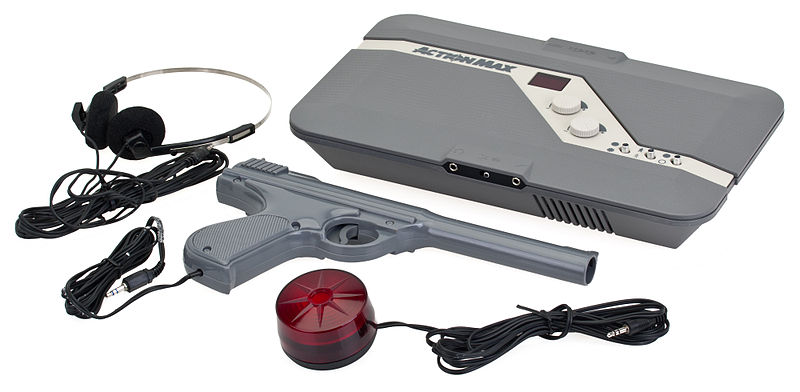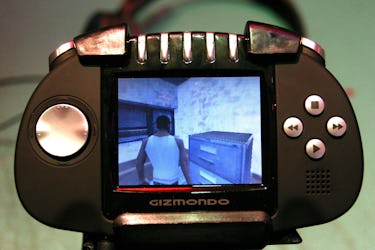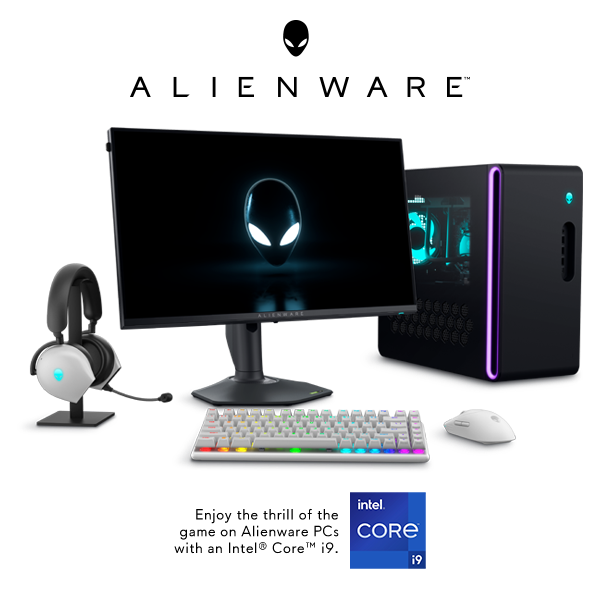Gaming Consoles That Walked So Others Could Fly
Console gaming has come a long way since they first started popping up in the 1970s. From impressive innovation to consoles that were incredibly niche, there is no denying that some ideas might have been more successful than others, but that doesn’t mean we can’t appreciate them.
- Action MAX
Starting off strong with the Action MAX. This gaming console was released in 1987 by Worlds of Wonder. It utilized a VHS player instead of cartridges or discs. The console was designed to work with a special light gun controller that would be used to shoot at targets that would appear on the screen. The VHS tapes would contain pre-recorded footage of live-action movies, which would play on a separate TV screen while the light gun controller was used to interact. It was an interesting idea, but the sheer amount of components required made it tedious and it was discontinued after just a few years.

- Nokia N-Gage
While mention of the brand might only remind people of a nearly indestructible phone, Nokia had gaming in mind when they launched the Nokia N-Gage in 2003. The idea to merge a gaming device with a full-capable phone was a great one, but not without its flaws. It offered promising potential with built-in Bluetooth and support for online gaming, but ultimately failed as it was found to be clunky and awkward. This design, paired with its limited library and expensive price tag, ultimately failed even after a redesign in 2004 and was discontinued in 2005.

- Mattel Hyperscan
The Mattel Hyperscan was released in 2006. It was marketed as a "next-generation" gaming console that incorporated physical trading cards into the gameplay and targeted audiences of kids ages five through nine. The console featured a unique design with a wireless controller that had a slot for trading cards. Players would use the cards to activate characters and items in the game. The console also had a built-in RFID scanner that could read the cards and transfer data wirelessly to the console. It ultimately couldn’t compete with more established brands and had only 23 games to offer. It was discontinued a year later in 2007.

- XaviXOPRT
The XaviXPORT intended to change the way we saw gaming with its introduction by SSD Company Limited in 2004. Instead of competing with the current market, it aimed to be different with its use of motion detection. Launching with three games: Baseball, Bowling, and Tennis, they soon announced that they would be partnering with Jackie Chan to bring two additional games to the market: Jackie Chan Studio Fitness: PowerBoxing and Jackie Chan Studio Fitness: J-MAT. While this technology was exciting and innovative for the times, it lacked enough marketing in the US to really get its feet off the ground and faded into obsolescence with the release of the Nintendo Wii in 2006.

- Gizmondo
Introduced by the Swedish company, Tiger Telematics, in 2005, the Gizmondo seemed to offer everything; built-in GPS, a camera, and the ability to play music and movies. It also had wireless connectivity and supported online gaming. Intended to compete with the Nintendo DS and Sony PSP, this gaming device certainly had lofty goals that might have been achieved if not for the company's ties to the mafia. Director of Gizmondo Europe Stefan Eriksson was involved in "Uppsalamaffian” a Swedish criminal mafia and the company was forced into bankruptcy after amassing US$300 million (£160 million) debt. The Gizmondo went down with the ship in 2006.

Did you have any of these systems? Let me know!













